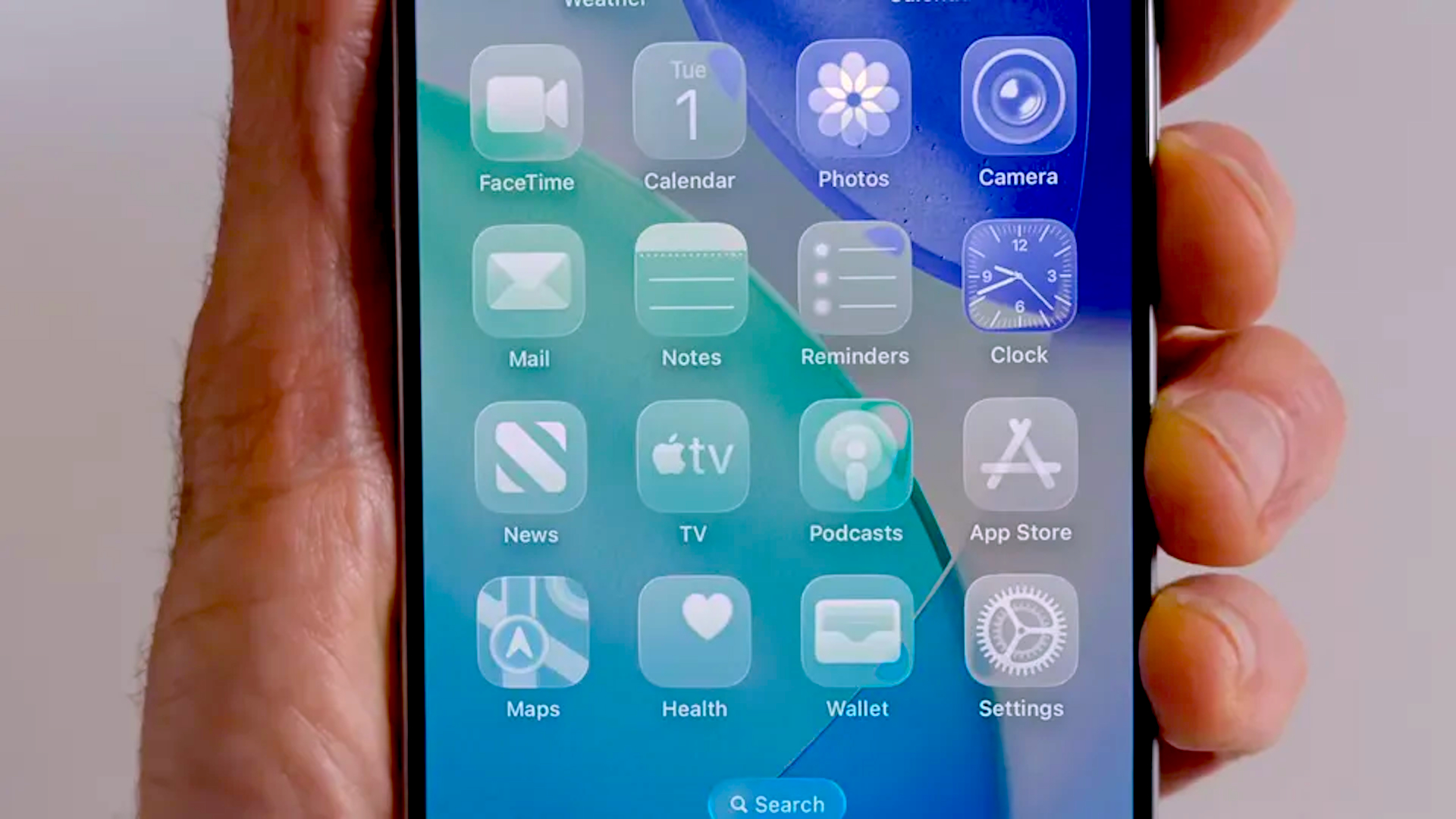Big question: what's the key factor affecting web design today?
We're seeing a revolution in web design and development across many areas, from new techniques to innovative services. But which are uppermost in the minds of our experts?

Andy Budd
clearleft.com
The field of web design and development has developed so much in the last couple of years that we've really become masters of the domain. We've become experts at everything from understanding the needs of the user and planning out complicated sites, through to managing intricate development processes and learning how to build sites that scale. We understand the importance of accessibility and have mastered new frontend technologies and techniques like HTML5 and responsive design. This means that we're now able to build fully rounded applications in the browser that were hitherto impossible. As such I think the biggest single most important factor affecting the state of web design today comes from the client.
While the level of professionalism and complexity in the web design industry has grown at a rapid rate, client budgets haven't kept pace. As such, cost cutting has become the norm. Most agencies just don't have enough time and budget to do things well, so are forced by their clients to cut corners. This is especially true when the vast majority of pitches are decided on budgetary and deadline related terms. So agencies offer their clients watered down service and then get blamed when what they deliver doesn't match expectations.
However, I don't want to point the finger of blame entirely at clients as most of them aren't experts in the web design field and can only base their prices on what agencies quote and what they have always paid. It's our responsibility to charge appropriately and not underquote simply to win business. Instead we need to make it clear that as professionals there is a level of quality below which we refuse to go, even if it means losing out on a potential contract.
Andy is managing director of Clearleft

Chris Mills
dev.opera.com
IMO, the most important factor affecting web design today is the explosion of vastly differing devices onto the scene that we are now called upon to support: phones, tablets, etc.
Daily design news, reviews, how-tos and more, as picked by the editors.
This is requiring web designers to pick up a lot of new skills and attitudes, eg adaptive/responsive design, if they want to provide good user experiences AND stay efficient.
Chris educates on open standards for Opera

Jonathan Smiley
zurb.com
I'd say the biggest factor would be the changing landscape. New devices, new platforms, new presentation technology, and new expectations for functional design. It takes a lot of energy to not just keep up, but take advantage of new options. I'd say web designers are going to have to work harder than before to do great web design, even while the bar is lowering for web design in general.
Jonathan is a design lead at ZURB

Trent Walton
paravelinc.com
I've been thinking a lot about the hazards of the job. Granted, office work doesn't sound immediately dangerous, but spending 8+ hours a day sitting hunched over a desk staring at a screen is bound to have negative long-term effects.
We need to look beyond our screens for inspiration and get out of our chairs for the sake of our physical well being. If our bodies were intended only for sitting and working on the web we'd all look like giant blobs of silly putty with eyes and one arm with 20 fingers for typing. No one wants that.
I'm interested in seeing the kind of work we'll be putting out in 20 years, and I really hope we're all still around to do it.
Trent is founder of Paravel

Chris Coyier
chriscoyier.net
Web design is what happens in web browsers, so the state of web design is current browser capabilities blended with what web designers are doing with those capabilities. So it's all about what those browser vendors choose to implement, how they choose to implement it, and how us designers react to those changes.
Chris is a web designer working at Wufoo

Chip Hayner
centresource.com
The prevalence of multiple viewing interfaces. Everything needs to look good on both a huge monitor and a tiny handheld screen. While devices are becoming smarter in their abilities to view the "normal" or "desktop" version of the site (using smart zooming, for example), users are starting to expect optimized experiences for the particular device that they are on (desktop, tablet, mobile, TV box). This requires one single site to be designed and built multiple times -- sometimes requiring only simple CSS tweaks and adjustments, while other times requiring an entirely different layout, custom-built for the platform.
Chip is a consultant, developer and designer specialising in PHP development

Jeff Croft
jeffcroft.com
The biggest factor affecting the state of web design today is the fact that more and more, the "web" is APIs and services, rather than sites, apps, and pages rendered in web browsers.
Take Instagram: it's one of the most popular services on the "web" and the entire experience is controlled not by some HTML pages, but rather by an iPhone app. Twitter and Facebook are just as popular, if not more so, via native apps for various platforms (iOS, Android, Mac, Windows, etc.) than they are on the browser-based web. As "web designers," we have to start realising that our job is no longer solely to produce sites, apps, and pages built in HTML, CSS, and JavaScript. More and more, the "web" is not a platform. It's a service with clients on many platforms. Wired Magazine called it the "death" of the web. I call it an evolution.
Jeff is a designer, author, speaker and blogger

Whitney Hess
whitneyhess.com
The lack of regulation of what we do and how we do it is far and away the greatest factor affecting the state of web design today.
Design and development are our occupations (a way of spending time) NOT yet our professions (requiring prolonged training and a formal qualification). Until certification is required for us as it is for a doctor, lawyer, accountant, architect or real estate broker, there will always be a million opinions flying around about the appropriate way to do things, and absolutely no basis for demanding consistency and fluency.
Regulation may thwart creativity and innovation to an extent, but it also raises the expectation of quality -- and I definitely think we could use a bit of that.
Whitney is an independent user experience designer

Robert Mills
bluegg.co.uk
Bad content! It's an obvious answer and not something that's new but the web being what it is, almost anyone can create and publish content and the result is a never ending list of websites where the content isn't appropriate for the audience, doesn't have the right tone of voice for the brand or is simply poorly written. With content strategy seemingly at the fore of everyone's minds at the moment this looks set to change but it won't happen overnight.
Rob is studio manager for creative agency Bluegg

Elliot Jay Stocks
elliotjaystocks.com
The 'responsive web design' movement has finally heralded a fundamental shift in the way many of us think about designing for the web. Sure, we've had fluid layouts for years, but only now are we collectively understanding that websites should be properly flexible. I believe that's the most important factor: the widespread adoption of this idea by our community. We're designing truly interactive experiences and the days of fixed, flat Photoshop mock-ups are coming to an end. So, too, then, are the days of designers who can't code.
Elliot is a designer and illustrator

Dan Mall
www.danielmall.com
This is an exciting time in web design. Typography choices on the web are getting better. Devices are giving us better access to the web. HTML5, CSS3, canvas, and other great technologies are giving us more ways to express ideas.
However, especially when great technologies are available, there's always a risk that the solution gets lost beneath the method. Parallax, responsive design, QR codes, web fonts, geolocation… all of these are incredibly useful tools and methods, but often end up benefiting the designers' or developers' portfolios more than a user's experience.
The single most important factor affecting the state of web design today is remembering the people who use the stuff we're making.
Dan is art director at Big Spaceship

The Creative Bloq team is made up of a group of art and design enthusiasts, and has changed and evolved since Creative Bloq began back in 2012. The current website team consists of eight full-time members of staff: Editor Georgia Coggan, Deputy Editor Rosie Hilder, Ecommerce Editor Beren Neale, Senior News Editor Daniel Piper, Editor, Digital Art and 3D Ian Dean, Tech Reviews Editor Erlingur Einarsson, Ecommerce Writer Beth Nicholls and Staff Writer Natalie Fear, as well as a roster of freelancers from around the world. The ImagineFX magazine team also pitch in, ensuring that content from leading digital art publication ImagineFX is represented on Creative Bloq.
